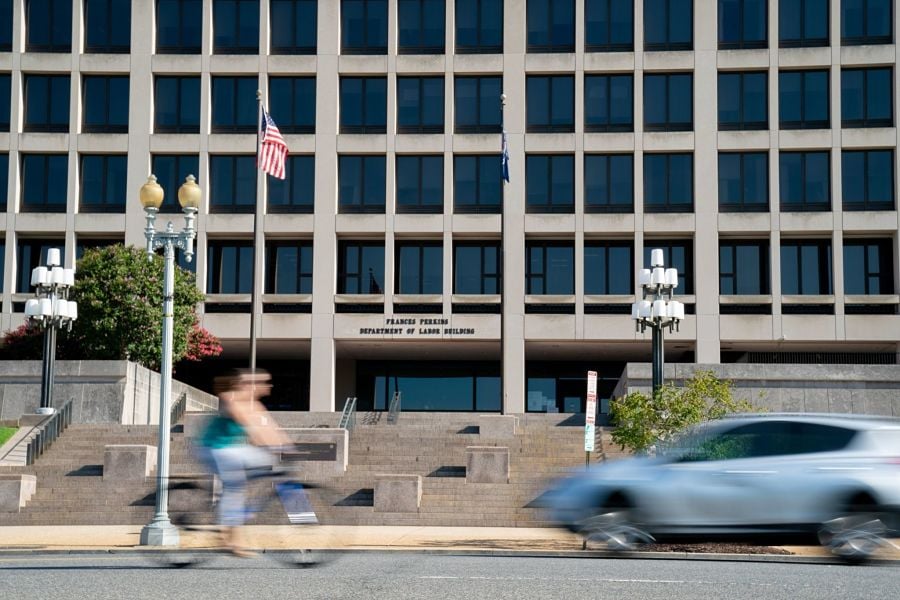

In an election week during which Americans appear to be as divided as ever, yet another point of contention between Democrats and Republicans emerges in the financial advice community related to retirement plans.
Recently the Labor Department issued a final regulation curbing the use of ESG investing in company-sponsored retirement plans. It is, in some ways, a microcosm of the growing social and political divide in America. Fiduciaries, agency officials explain, should not sacrifice returns, increase risks or raise the cost of a plan in order to pursue nonpecuniary objectives, such as environment, social and governance investing.
ESG investing has grown wildly this year. The appetite for these investments is driven largely by younger investors and religious organizations. Company-sponsored retirement plans have responded to the demand by adding these offerings.
But the DOL’s rule pumps the brakes on including ESG in retirement funds by requiring plan fiduciaries to select investments and strategies based solely on how they will affect the plan’s financial performance, or pecuniary goals.
Opposition to the rule was enormous, garnering 8,700 comment letters decrying the move.
Cynics argue that this is a naked attempt by a possibly outgoing DOL leadership to protect the biggest loser of the ESG movement: Big Energy. Critics say the Trump administration’s support for the fossil fuel industry contributed to the push to get the DOL rule across the finish line before the election.
And with control of the Senate resting on the outcome of two runoffs in Georgia, it appears unlikely a Biden administration would be able to overturn the rule.
So the rule is probably here to stay.
While the DOL rule may limit the ability of plan fiduciaries to use a nonpecuniary standard in adding ESG to plan menus, there is some sound reasoning behind the decision.
There’s a strong argument to be made to protect passive retirement plan participants from trendy strategies that may not have the staying power of, say, investing in stalwarts such as blue-chip stocks and fossil-fuel companies.
ESG, then, could be used as a factor for plan fiduciaries to determine the strength of an investment over the long term, much as the price-to-earnings ratio or earnings per share help weed out stock performance.
Clearly, the Labor Department took the 8,700 comment letters opposing the rule to heart by focusing on the fiduciary aspects, adding a “pecuniary” versus “nonpecuniary” litmus test, and by avoiding using the ESG label explicitly in its final rule.
As Jeff Benjamin reported earlier this year, there is the danger of investors being duped by the practice of “greenwashing,” or making a fund appear ideologically purer than it really is. Thus, the rule forces plan fiduciaries to do their due diligence on these popular offerings before putting plan participants in peril.
It’s admirable that the DOL wants to protect retirement plan investors from the perils of “greenwashing” by holding plans to a clear standard. But the current solution seems too poorly defined to avoid creating a “baby with the bathwater” moment by so doing.

A new proposal could end the ban on promoting client reviews in states like California and Connecticut, giving state-registered advisors a level playing field with their SEC-registered peers.

Morningstar research data show improved retirement trajectories for self-directors and allocators placed in managed accounts.

Some in the industry say that more UBS financial advisors this year will be heading for the exits.

The Wall Street giant has blasted data middlemen as digital freeloaders, but tech firms and consumer advocates are pushing back.

Research reveals a 4% year-on-year increase in expenses that one in five Americans, including one-quarter of Gen Xers, say they have not planned for.
Orion's Tom Wilson on delivering coordinated, high-touch service in a world where returns alone no longer set you apart.
Barely a decade old, registered index-linked annuities have quickly surged in popularity, thanks to their unique blend of protection and growth potential—an appealing option for investors looking to chart a steadier course through today's choppy market waters, says Myles Lambert, Brighthouse Financial.
